
Nauvoo is a small city in Hancock County, Illinois, United States, on the Mississippi River near Fort Madison, Iowa. The population of Nauvoo was 950 at the 2020 census. Nauvoo attracts visitors for its historic importance and its religious significance to members of several groups: The Church of Jesus Christ of Latter-day Saints; the Community of Christ, formerly the Reorganized Church of Jesus Christ of Latter Day Saints (RLDS); other groups stemming from the Latter Day Saint movement; and the Icarians. The city and its immediate surrounding area are listed on the National Register of Historic Places as the Nauvoo Historic District.

Bunkerville is a census-designated place in Clark County, Nevada, United States. The population was 1,303 at the 2010 census.
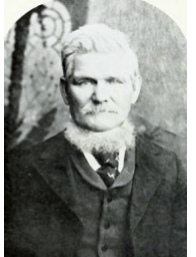
Dudley Leavitt was an early patriarch of the Church of Jesus Christ of Latter-day Saints, a Mormon pioneer and an early settler in southern Utah.

Old Las Vegas Mormon Fort State Historic Park is a state park of Nevada, containing the Old Mormon Fort, the first structure built by people of European heritage in what would become Las Vegas fifty years later. In present-day Las Vegas, the site is at the southeast corner of Las Vegas Boulevard and Washington Avenue, less than one mile north of the downtown area and Fremont Street. This is the only U.S. state park located in a city that houses the first building ever built in that city. The fort was listed on the National Register of Historic Places on February 1, 1972. The site is memorialized with a tablet erected by the Church of Jesus Christ of Latter-day Saints in 1997, along with Nevada Historical Marker #35, and two markers placed by the Daughters of Utah Pioneers.

The Old Ship Church is a Puritan church built in 1681 in Hingham, Massachusetts. It is the only surviving 17th-century Puritan meetinghouse in the United States. Its congregation, gathered in 1635 and officially known as First Parish in Hingham, occupies the oldest church building in continuous ecclesiastical use in the country. On October 9, 1960, it was designated a National Historic Landmark, and on November 15, 1966, it was added to the National Register of Historic Places.

Kyle Ranch or Kiel Ranch, was one of the earliest ranches established in Nevada's Las Vegas Valley. Founded by Conrad Kiel in 1875, today the location of the former ranch is in North Las Vegas, where the city maintains the remnants of the site as the "Kiel Ranch Historic Park." The original adobe structure, one of the oldest buildings in Las Vegas, a wooden shed known as the "Doll House," and the cemetery are all that remain after loss of buildings through fire and neglect. Also within the park is an artesian well and a small wetlands, a reminder of what drew travelers and early settlers to the area. Presently the ranch's location is memorialized with Nevada Historical Marker number 224.
Edward Bunker was a Mormon pioneer and community founder of Bunkerville, Nevada.

John Vaughan House is a historic house near Shandon, Ohio.

Joseph Stacy Murdock was an American colonizer, leader, and Latter-day Saint hymn writer. He wrote the words to "Come Listen to a Prophet's Voice."
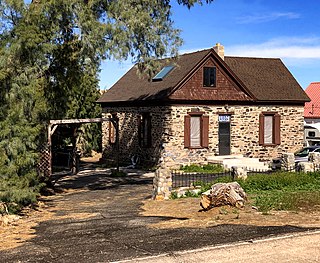
Parley Hunt House is a historic home in Bunkerville, Nevada which was listed on the National Register of Historic Places in 1991.
Leavitt is a hamlet in southern Alberta, Canada within Cardston County, located about 13 kilometres (8 mi) west of Cardston on Highway 5. It falls within the Canadian federal electoral district of Medicine Hat—Cardston—Warner.

Thomas Rowell "Tom" Leavitt was a member of the Church of Jesus Christ of Latter-day Saints and the founding settler of Leavitt, Alberta, Canada, which the former Utah sheriff and marshal founded at age 53 after an arduous 800-mile (1,300 km) journey in covered wagons, fleeing a crackdown on polygamy that sent fellow members of The Church of Jesus Christ of Latter-day Saints across the border to Mexico and Canada.
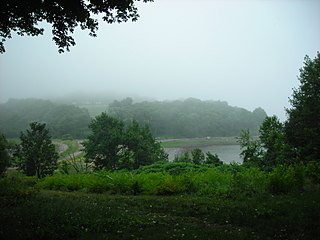
Moses Leavitt (1650–1730) was an early settler of Exeter, New Hampshire, in what is now the United States, where he worked as a surveyor. Later he became a large landowner, and served as selectman, and as a Deputy and later Moderator of the New Hampshire General Court from Exeter. He was the ancestor of several notable Leavitt descendants, including the well-known Meredith, New Hampshire, teacher and almanac maker Dudley Leavitt.

The Blazo–Leavitt House is a historic house on Maine State Route 160 in Parsonsfield, Maine, United States. The large two-story house was built in 1812, and is one of the finest Federal period houses in northern York County. The house was listed on the National Register of Historic Places in 1982.
The Thomas Hickman House is a historic home in Howard County, Missouri. It is a brick, Georgian-style house, built by businessman Thomas Hickman in 1819. It was added to the National Register of Historic Places in July 2006.

Salem Black River Presbyterian Church is a historic church in Sumter, South Carolina.
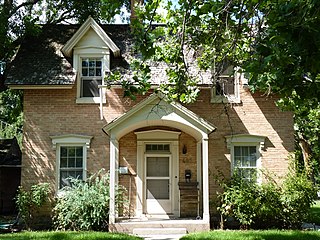
The Johnson–Hansen House is a historic house located in Provo, Utah, United States, that is listed on the National Register of Historic Places.
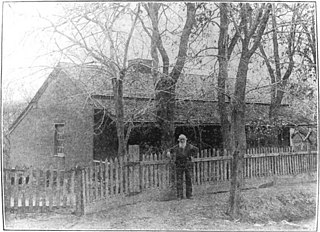
The John Steele House is the historic home of a prominent early resident of Toquerville, Utah. One of the Mormon pioneers, John Steele built the house in 1862 and lived there until his death in 1903, working as an herbal physician and serving in a number of town and county offices. Its floor plan is a rare double-parlor style.

The Thomas Forsyth House is the historic home of an early settler of Toquerville, Utah. One of the Mormon pioneers, Thomas Forsyth built the house circa 1868 and lived there until his death in 1898. He operated mills, dried fruit and stocked the cellar with wine he made himself, while his wife Mary Browett Holmes ran a glove shop. The simple 1½-story fieldstone construction, a hall-and-parlor house extended with a lean-to, is representative of the pioneer period.


















